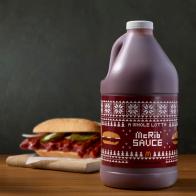13 Things Food Truck Owners Wish You Knew
We asked chefs and operators to sound off on the challenges and realities of running a food truck.
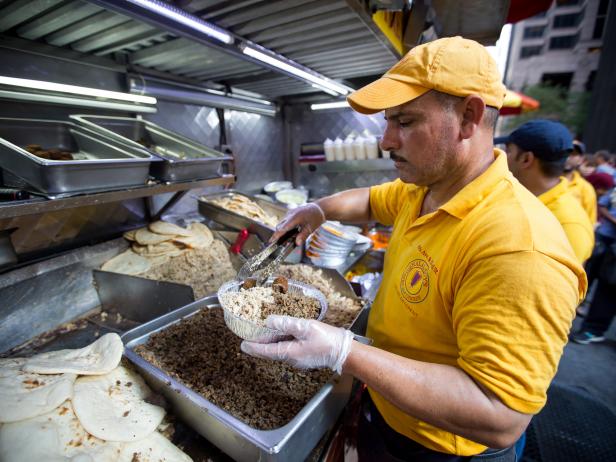
Bloomberg/Getty Images
Watch The Great Food Truck Race on Sundays at 8|7c
Admit it, the life of a food truck chef seems a little romantic. The idea of picking up your restaurant and taking it wherever throngs of hungry fans are in need of a taste of your specialty cuisine seems like a dream gig. But the realities of running a food truck may not be so glamorous.
Whether its planning, prepping and serving food to long lines of customers, making the margins of the notoriously slim-profit restaurant industry work out in your favor, or simply dealing with parking and licensing laws in different cities, the life of a food truck chef can be as harried and hectic as the back of the house in any high-expectations, brick-and-mortar restaurant, all while demanding diners are staring at you through the “Order Here” window.
With that in mind, we reached out to a variety of food truck operators from around the country to ask them what they would want to tell customers about the business, logistics and other realities of running a restaurant on wheels.
Here are 13 things food truck owners wish you knew:
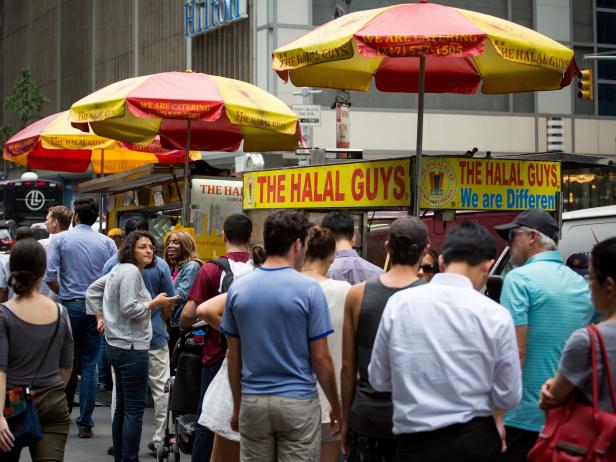
Bloomberg/Getty Images
They’re working fast, even if the line is slow.
“People sometimes get frustrated with long lines, but there’s not a whole lot we can control about lines, other than taking orders as fast as we can,” Erica Escontrias, owner and partner of Southern California-based Baby’s Badass Burgers, said. “However, many customers have lots of questions and order modifications, so it takes some time to get through the line. As soon as we take an order, we strive to have a very quick turnaround with getting orders out. Typically, customers won’t wait more than five minutes to receive their order.”
You may (or may not) be able to make modifications.
Having limited space in a food truck combined with the fast pace expected by customers means streamlined menus are usually the standard. That’s true for New York City’s The Halal Guys which operates both street vendor food cards and brick and mortar stores. “While they are optimized for efficiency and speed, the compact nature of carts restricts the number of ingredients and menu items they can carry,” The Halal Guys CEO Ahmed Abouelenein explained. “This limitation means that carts typically focus on a streamlined selection of popular and high-demand items to ensure quick service and operational efficiency. In fact, our brick-and-mortar locations have the capacity to carry approximately five percent more menu items and ingredients compared to our carts.”
“We are always willing to go above and beyond when it comes to customer service,” Rachel Angulo, owner of Venezuelan street food truck La Cocinita in New Orleans and Chicago, offered. “But when customers make special menu requests and customize their order, it takes extra time and causes the line to move more slowly. So when it’s super busy, it’s preferable that our guests only make substitutions that are need-based (i.e., according to allergies or dietary restrictions).”
Abouelenein added that, in the case of The Halal Guys which, like La Cocinta, operates both outdoor and indoor locations, if you need more specific modifications met, the brick-and-mortar restaurants are better prepared to “offer an expanded menu that caters to diverse customer preferences and dietary requirements.”
Wait for your food and grab it quickly.
“Food trucks are a small environment, so when you order, even if there is a little wait for your food, please stay close enough to hear us call for you,” Jessica Caldwell, owner of Philadelphia’s Red Stone Pizza Truck explained. “If we have a few orders where people walk away, and don’t come back for their food for a bit, it takes up precious space that we need to prepare other people’s orders.”
Food truck food does not always mean cheaper food.
“Some people are surprised that food truck pricing does not tend to be any cheaper than that of a quick service restaurant,” Angulo of La Cocinita said. “While food trucks do not always pay rent in the form of a physical restaurant space (though many do!), there are commissary kitchen expenses, as well as a variety of other costs that prevent our pricing from being as competitive as some might expect.”
Food trucks owners still pay rent.
Though you might assume food trucks are self-contained setups, as Angulo mentions above and as Caldwell of Red Stone Pizza Truck pointed out, many require additional commercial space for batching out their menu items.
“Yes we still pay rent, as food trucks are required to work out of commercial commissaries,” Caldwell said. “These buildings provide a commercial kitchen that is licensed by the county, where we cook and prep our food. We also store our equipment and products there, and it’s the place we park our truck at the end of the day. In Philadelphia, trucks are legally required to report back to a commissary [...] It’s there we empty our gray water, clean the truck thoroughly, wash dishes and restock food. This cost can easily be over $1,000 per month.”

UCG/Getty Images
Food trucks need to be licensed.
If you think opening a food truck is as easy as setting up a flat top grill in a delivery van, think again. “We need to be licensed in each county that we work in every year,” Caldwell stated, echoing comments from many of the operators we reached out to. “This also means we pay for a license in each county, which is several hundred dollars, and need to go for an inspection in each (our truck spends well over $1,000 in licensing each season). Also, for major festivals, we are inspected again. Sometimes our truck can be inspected in one county at least five times a year. Trucks that you see at festivals in Philadelphia are constantly being monitored, even more so than a restaurant.”
Food trucks do their best to plan ahead (and not run out of food).
For example, Bend, Oregon’s CurBBQ truck serves up slow-smoked beef, pork and chicken which, of course, can’t be made to order. “Smoking the right amount of meat is a challenge we have had to learn,” owner and chef Jen Illingworth said. “With our smoker being outside and in the open, smoking through the night is not an option. We have had meat stolen right off our smoker.”
Aside from possible meat thievery, the other reason a food truck might have to cross an item off the menu board for the day is quality. “Everything we prepare is a day ahead. We have always prided ourselves on our freshness,” Illingworth continued. “Yes, store bought potato salad or frozen pre-cooked/-smoked meat would be easier, but it definitely doesn’t taste as good as a family recipe or [have] the fresh fragrance hickory and oak smoke provides.”
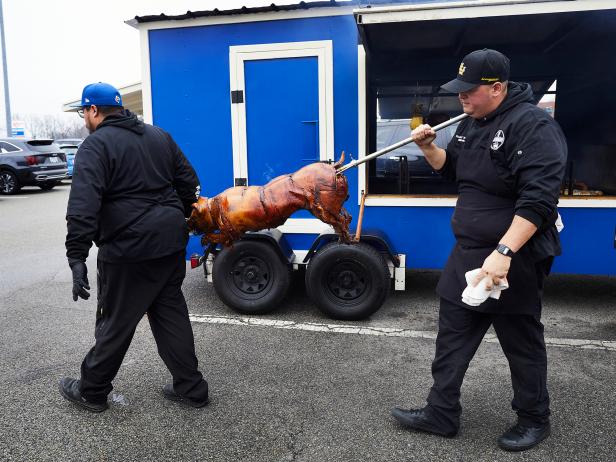
The Washington Post/Getty Images
They’re dealing with “supply and demand,” too.
“Space is limited and if we run out it’s not because of poor planning, so many factors play into our daily operation,” Illingworth of CurBBQ said. “We depend greatly on our local stores. If they don’t have it, we have to wait to receive it! This has affected our paper goods, meat cuts, canned goods and produce!”
Due to its popularity in the workday population center of midtown Manhattan, The Halal Guys works to stave off any shortages through constant communication with the cooks, as well as a network of supply trucks to keep ingredients in stock throughout the day. “On an average day, our cart located at the intersection of 6th Avenue and 53rd Street serves approximately 400 more guests compared to our nearest brick-and-mortar location on 14th Street, yet we rarely sell out of food at the carts,” Abouelenein explained. “The Halal Guys operational reliability is achieved through a well-coordinated support system involving helping carts and standby supply vehicles that are strategically positioned to ensure continuous restocking. It’s because of this thoughtful planning that we typically do not sell out of items at the carts.”
Food trucks can’t simply “swing by.”
With all the pre-planning required to start a day of service, food trucks aren’t necessarily able to answer last-minute requests to show up somewhere.
“It takes a lot of prep work, operational logistics, and time/money to send the truck out,” Angulo of La Cocinita, noted. “So while people often ask if the truck can ‘swing by’ their location, that’s not very feasible unless we can plan it in advance and hit a certain sales threshold.”
Despite their mobile nature, many food truck operators can’t simply decide to pick up and go on a moment’s notice. “Even if we’re only selling for two to three hours, we still work an eight-to-ten-hour day because we use fresh ingredients that need to be prepared,” Caldwell of Red Stone Pizza Truck said. “We have to factor in driving time, set up time, clean up time, etc.”
Food trucks can’t just park anywhere.
Despite being a restaurant on the go, food trucks can’t just go wherever they please. As the popularity of food trucks has exploded in recent years, more municipalities are putting rules in place. “We can sell on private property, but public streets are not the same,” Red Stone Pizza Truck’s Caldwell shared of their home city Philadelphia and surrounding areas. “Every year, more locations are taken away from us, forcing trucks to all work in certain areas. We monitor city councils’ decisions on vending areas constantly, and have even fought to keep vending locations available (successfully and unsuccessfully).”
“Being a part of the street food community means building relationships with neighboring businesses and residents,” Haidy Gaitan, communications and media coordinator of Queens, New York-based Birria Landia said. “We work hard to be good neighbors, ensuring our presence enhances the area.”
Food trucks, unlike other restaurants, are at the mercy of Mother Nature.
Not only does being exposed to the elements mean braving extreme cold or hot weather — “Just imagine a heat wave and then you’re standing next to a hot fire in the oven,” Red Stone Pizza Truck’s Caldwell pointed out — but the forecast can also impact the next day’s business.
“With our barbecue style cart we have learned to quickly pivot with how we determine our daily prep,” CurBBQ’s Illingworth said. “We work with a bunch of different variables — weather, seasons, wind, wildfire smoke, heat, snow, freezing temps, holidays — all of these play into how much we prep for the next day.”
Food trucks are still, you know, trucks.
“The food truck business has all of the challenges of a regular brick and mortar business, but it’s on wheels,” Escontrias of Baby’s Badass Burgers pointed out. “You now have the additional issues that come along with maintaining a commercial vehicle. Breakdowns, tire blowouts, generator issues — these are all things that food truck owners deal with.”
Gaitan of Birria Landia echoed those challenges, saying, “Operating food trucks means dealing with generator issues, moving trucks to different locations, and navigating the streets, which can be unpredictable. We also manage gas tanks and equipment maintenance to ensure everything runs smoothly. Despite these challenges, we are committed to bringing you the best food and service every day.”
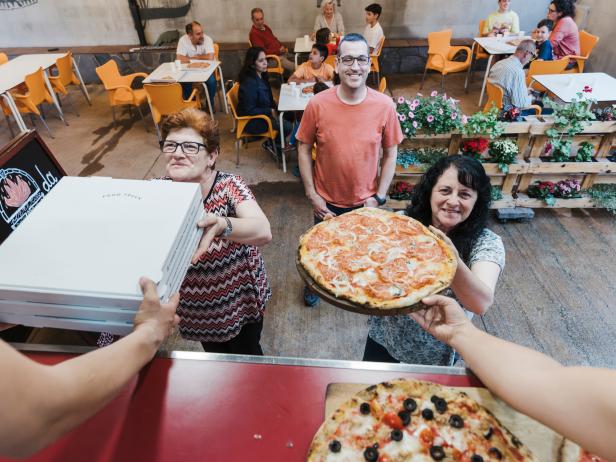
COROIMAGE/Getty Images
Food truck owners truly appreciate their customers.
“Working on a food truck is not just about cooking; it’s about creating an experience,” Gaitan of Birria Landia said. “It’s early mornings, late nights and constant movement. We face weather challenges, street navigation, and equipment maintenance daily. Despite it all, our passion for cooking with heart and seeing your satisfaction keeps us going. Your support means everything!”
Related Content:












